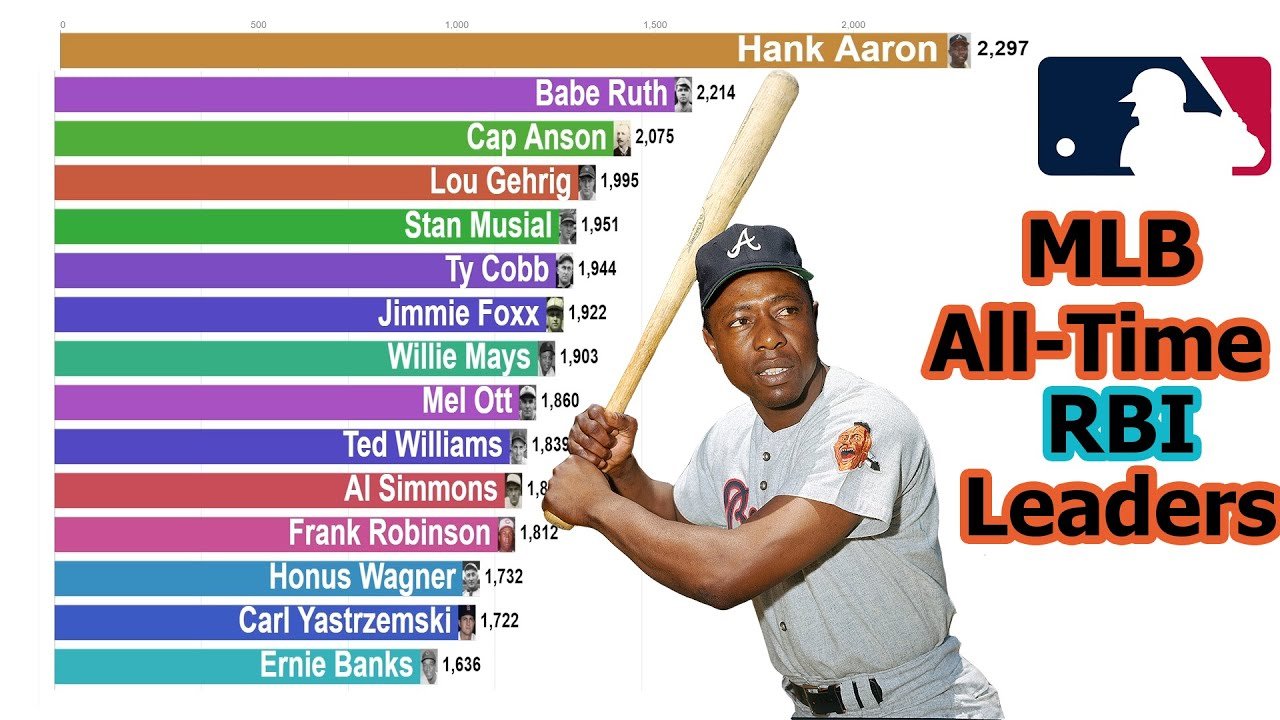RBI stands for “Runs Batted In” in baseball. It’s a key statistic that measures a player’s effectiveness in generating runs.
In baseball, understanding RBIs is crucial. It reflects how well a batter contributes to the team’s score. Every time a player hits the ball and teammates score, the batter earns an RBI. This stat can be a game-changer, influencing team strategies and player evaluations.
Knowing what an RBI means helps fans appreciate the game better. It’s not just about hitting home runs; it’s about teamwork and timing. This guide will break down the concept of RBIs, explain their importance, and show how they impact the game.
Historical Background
The term “RBI” stands for Runs Batted In. It’s a key statistic in baseball. It measures a player’s effectiveness at driving in runs. Understanding its history helps appreciate its importance today.
Origin Of Rbi
RBI originated in the early days of baseball. It was first introduced in the late 19th century. Baseball pioneers wanted to track players’ contributions. They aimed to quantify how players helped their teams score runs. This led to the creation of the RBI statistic.
The first official use of RBI appeared in 1879. Henry Chadwick, a baseball writer, played a significant role. He believed in the importance of statistical records. His efforts helped establish RBI as a recognized baseball statistic.
Evolution Over Time
RBI has evolved significantly over time. In the early years, tracking and recording were manual. This made it difficult to ensure accuracy. With advancements in technology, recording became more precise. The introduction of computers in baseball made a big difference.
Today, RBI is a standard statistic in baseball. It is used by analysts, coaches, and fans alike. It helps evaluate a player’s offensive performance. Many legendary players are known for their high RBI counts. This statistic remains a key indicator of success in baseball.

Credit: www.youtube.com
Calculating Rbi
Calculating RBI (Runs Batted In) in baseball is important for understanding a player’s impact. It shows how effective they are at driving in runs. This is a key metric for measuring a player’s contribution to the team’s scoring. Let’s dive into the process of calculating RBI.
Basic Formula
The basic formula for calculating RBI is straightforward. An RBI is credited to a batter whenever a run scores because of their hit, walk, or other action at the plate. For example, if a batter hits a single and a runner scores from third base, the batter gets an RBI. Each run driven in adds to the player’s RBI total.
Situational Examples
Different game situations can affect how RBIs are awarded. Here are some examples:
If a batter hits a home run, they get an RBI for every runner on base. If the bases are loaded, the batter earns four RBIs.
Sacrifice flies also count towards RBIs. If a batter hits a deep fly ball and a runner tags up and scores, the batter is credited with an RBI.
Walks with the bases loaded also count. If a batter draws a walk and forces in a run, they receive an RBI.
Even ground outs can lead to RBIs. If a batter hits a ground ball and a runner scores from third, an RBI is awarded.
These examples show how different actions in the game can lead to RBIs. Understanding these situations helps appreciate a player’s ability to drive in runs.
Rbi And Player Performance
RBI, or Runs Batted In, is a key stat in baseball. It measures how many runs a player contributes. Understanding RBI helps evaluate a player’s impact on the game. This metric shows a player’s ability to bring teammates home. High RBI counts can boost a player’s reputation.
Impact On Batting Statistics
RBI directly affects a player’s batting statistics. It showcases their skill in crucial moments. Players with high RBIs often hit well with runners on base. This ability can change the outcome of games. Consistent high RBI numbers can lead to more wins. It also makes the player more valuable to the team.
Comparison With Other Metrics
While RBI is important, other metrics also matter. For example, batting average shows how often a player gets hits. On-base percentage indicates how often they reach base. Slugging percentage measures power hitting. Each of these stats offers a different view of player performance. Combining them gives a full picture of a player’s abilities.

Credit: en.wikipedia.org
Famous Rbi Records
RBI, or Runs Batted In, is a crucial statistic in baseball. It reflects a player’s ability to bring teammates home to score. Over the years, many players have set impressive records. These records highlight their exceptional talent and consistency.
Single-season Records
The single-season RBI record is a significant achievement. Hack Wilson holds the record with 191 RBIs in 1930. This record has stood for decades, showing Wilson’s dominance. Few players have come close to this number. It remains a benchmark for excellence in baseball.
Other players also achieved remarkable single-season RBI totals. Lou Gehrig, for example, had 184 RBIs in 1931. Hank Greenberg recorded 183 RBIs in 1937. These feats demonstrate their incredible hitting prowess. They are remembered as some of the best hitters in history.
All-time Leaders
The all-time RBI leaders list includes baseball legends. Hank Aaron tops the list with 2,297 RBIs. His career spanned from 1954 to 1976. Aaron’s consistency and power at the plate were unmatched. He remains an iconic figure in baseball.
Another notable player is Babe Ruth, with 2,214 RBIs. Ruth’s impact on the game is legendary. His ability to drive in runs helped shape baseball’s history. Cap Anson, with 2,075 RBIs, also ranks high on this list. He played in the late 19th century, showing the long history of this statistic.
These players set the standard for future generations. Their records inspire current and upcoming players to strive for excellence. RBI records, both single-season and all-time, highlight the best of the best in baseball history.
Rbi In Modern Baseball
The RBI (Runs Batted In) is a key statistic in baseball. It measures the number of runs a player helps score. This metric has evolved with the game, showing new trends and insights.
Trends In Recent Seasons
Recent seasons show a shift in RBI trends. More players now focus on home runs. This shift impacts RBI stats. Teams value power hitters more. These players often bring in multiple runs with one swing.
| Season | Top RBI Player | RBI Total |
|---|---|---|
| 2021 | Player A | 120 |
| 2020 | Player B | 110 |
| 2019 | Player C | 130 |
These numbers show top players driving in over 100 runs. This consistency highlights their value to teams.
Influence Of Analytics
Analytics play a big role in modern baseball. Teams use data to make strategic decisions. This includes analyzing RBI contributions.
- Teams track RBI by situation.
- They study how often players hit with runners on base.
- They look at clutch performance.
This data helps teams understand a player’s true value. Not all RBI opportunities are equal. A player hitting with runners in scoring position is crucial.
Analytics also help spot trends. For example, a player might have a high RBI total. But if it mostly comes from solo home runs, it tells a different story.
Understanding these nuances helps teams build better lineups. Players who excel in key RBI situations are valuable assets.

Credit: www.youtube.com
Criticism And Limitations
Runs Batted In (RBI) is a popular baseball statistic. It measures a player’s effectiveness at driving in runs. While widely used, RBI has faced criticism and limitations. Critics argue RBI does not capture a player’s full performance. It only considers the outcome of a hit, not the context.
Some analysts believe RBI can be misleading. It depends on the player’s position in the batting order. A player with more opportunities to bat with runners on base will likely have higher RBI. This does not necessarily mean they are a better hitter.
Debates Among Analysts
Many debates exist among baseball analysts about RBI. Some argue it oversimplifies a player’s contribution. They believe RBI ignores other vital aspects of batting performance. Others feel RBI is valuable but should be used with other metrics.
There is also discussion about RBI’s fairness. Analysts note that players on strong teams may have more RBI opportunities. This can skew perceptions of individual talent. Critics suggest looking at other stats to get a complete picture.
Alternative Metrics
Several alternative metrics have emerged. On-base percentage (OBP) is one. It measures how often a player reaches base. Another metric, slugging percentage (SLG), assesses batting power.
Wins Above Replacement (WAR) is also popular. It evaluates a player’s overall contributions. These metrics provide a broader view than RBI alone. They help analysts understand a player’s true value.
Using a combination of metrics offers a better analysis. It ensures a more comprehensive evaluation of a player’s performance. Understanding these metrics helps fans appreciate the game’s complexities.
Frequently Asked Questions
What Does Rbi Stand For In Baseball?
RBI stands for “Runs Batted In. ” It measures the total runs a batter generates.
How Is Rbi Calculated In Baseball?
RBI is calculated when a batter’s action leads to a run. This includes hits and walks.
Why Is Rbi Important In Baseball?
RBI is important because it measures a player’s ability to contribute to team scoring.
Does A Home Run Count As An Rbi?
Yes, a home run counts as an RBI. The batter gets credit for each run scored.
Conclusion
Understanding RBI in baseball is essential for appreciating the sport. RBIs highlight a player’s ability to drive in runs. This can help you follow the game better. Knowing this term makes watching baseball more enjoyable. So, next time you watch, pay attention to RBIs.
You will understand the game on a deeper level. Keep learning and enjoy the game!





